Verdict - Vivo X200 FE
A compact and lightweight smartphone with thin bezels and fantastic battery life at a fair price. The Vivo X200 FE amassed many selling points in our tests, especially when compared to the Galaxy S25 FE. We also really liked the Zeiss main camera.
We struggle to understand the significant configuration differences in storage and battery between various EU countries. The slow USB 2.0 port also tarnishes the overall picture, as does the severe throttling.
If you're not afraid of importing, you should definitely check out our review of the X200 Pro Mini, which is currently even considerably cheaper.
Pros
Cons
Price and availability - Vivo X200 FE
The Vivo X200 FE has a launch price of £699 (RRP), but is currently unavailable to purchase on Amazon at the time of reviewing.
Table of Contents
- Verdict - Vivo X200 FE
- Specifications - Vivo X200 FE
- Case - The Android phone uses glass
- Features - A compact smartphone that only comes with USB 2.0
- Software - A top-range phone with Android 15
- Communication and GNSS - Vivo X200 FE with WiFi 7
- Telephone functions and voice quality - An Android smartphone with dual-SIM
- Cameras - A compact phone with Zeiss lenses
- Accessories and warranty - The Vivo X200 FE comes without a charger
- Input devices and operation - The Vivo phone houses a fingerprint sensor in the display
- Display - The compact handset uses OLED
- Performance - A small smartphone with a powerful chipset
- Emissions - The Android phone gets very warm
- Battery runtime - A fast-charging Android smartphone
- Notebookcheck overall rating
- Possible alternatives compared
Vivo is expanding the X200 series with a compact, premium model. In contrast to the X200 Pro Mini and X200 Pro, the new X200 FE has to make do with the older MediaTek Dimensity 9300+. Vivo has also cut down on the Zeiss camera system in its 6.31-inch FE version, although the "Full Experience" has been retained in accordance with the name. Compared to a Galaxy S24 FE, however, the data sheet promises few compromises.
Specifications - Vivo X200 FE
Case - The Android phone uses glass
The Vivo X200 FE impresses with a very well-crafted and robust case. Certified to both IP68 and IP69 standards makes it completely waterproof and dustproof. The rear is made of sandblasted glass, which not only looks high-quality but also largely prevents fingerprints. Vivo uses durable Schott Xensation glass to protect the front.
With an efficient display surface area ratio of over 90 percent, the 6.31-inch display makes excellent use of the available space. Despite the significantly larger battery, the compact X200 FE possesses a case that is just 8 millimeters thick and weighs 186 grams. This is slimmer and lighter than the Apple iPhone 16 Pro.
Features - A compact smartphone that only comes with USB 2.0
The Vivo X200 FE is equipped with USB OTG and Bluetooth 5.4, and the high-end smartphone also features an NFC chip for contactless payments. Two storage options are available depending on the region: In Austria and Germany, the FE model is available with 12 GB of LPDDR5X RAM and 256 GB of internal UFS storage, while in Spain, Poland, and Italy, Vivo has equipped its high-end phone with 512 GB.
Unfortunately, the X200 FE only uses USB 2.0. At 33 MB/s, its transfer speed wasn't particularly fast in the copy test. External storage devices formatted with exFAT and NTFS are supported.
Software - A top-range phone with Android 15
Unlike in China, the X200 FE doesn't come with OriginOS in Europe, but with Funtouch OS 15 based on Android 15. The global model's software seems a bit dated and less modern than the X200 Ultra. During testing, patches from August 2025 were provided.
Vivo guarantees four major Android updates and five years of security patches. The X200 FE is also listed with a five-year warranty in the European Product Energy Labelling Database (EPREL).
Sustainability
The X200 FE's packaging is plastic-free. Apart from that, there is no information regarding the carbon footprint or the materials used. The EPREL database index confirms the Vivo phone's solid repairability with a C grade. The company's provision of replacement parts for seven years is (theoretically) ensured.
Communication and GNSS - Vivo X200 FE with WiFi 7
The X200 FE uses fast WiFi 7, including the 6 GHz band. This meant transfer speeds using our reference router, the Asus ROG Rapture GT-AXE11000, were very fast and largely stable. However, at the beginning of our tests, the Vivo phone needed a bit of time to reach its full bandwidth.
The built-in cellular modem offers a wide range of frequencies for both LTE and 5G connections.
| Networking | |
| Vivo X200 FE | |
| iperf3 transmit AXE11000 | |
| iperf3 receive AXE11000 | |
| iperf3 transmit AXE11000 6GHz | |
| iperf3 receive AXE11000 6GHz | |
| Vivo X200 Pro Mini | |
| iperf3 transmit AXE11000 | |
| iperf3 receive AXE11000 | |
| Samsung Galaxy S25 | |
| iperf3 transmit AXE11000 | |
| iperf3 receive AXE11000 | |
| iperf3 transmit AXE11000 6GHz | |
| iperf3 receive AXE11000 6GHz | |
| Google Pixel 9 | |
| iperf3 transmit AXE11000 | |
| iperf3 receive AXE11000 | |
| iperf3 transmit AXE11000 6GHz | |
| iperf3 receive AXE11000 6GHz | |
| Xiaomi 15 | |
| iperf3 transmit AXE11000 | |
| iperf3 receive AXE11000 | |
| iperf3 transmit AXE11000 6GHz | |
| iperf3 receive AXE11000 6GHz | |
| Average 802.11 a/b/g/n/ac/ax/be | |
| iperf3 transmit AXE11000 | |
| iperf3 receive AXE11000 | |
| iperf3 transmit AXE11000 6GHz | |
| iperf3 receive AXE11000 6GHz | |
| Average of class Smartphone | |
| iperf3 transmit AXE11000 | |
| iperf3 receive AXE11000 | |
| iperf3 transmit AXE11000 6GHz | |
| iperf3 receive AXE11000 6GHz | |
Outdoors, the Vivo phone quickly found a satellite signal and pinpointed its position with great accuracy to within 1 meter. Major global satellite networks, ideally dual-band, are available for location tracking.
In our everyday test, the X200 FE performed well, although the high-end phone didn't always accurately map the route – but all in all, it's perfectly adequate for navigation tasks.
Telephone functions and voice quality - An Android smartphone with dual-SIM
Cameras - A compact phone with Zeiss lenses
The cheaper FE model does not come close to the X200 Pro Mini's' photo quality. Nevertheless, we really like the 50 MPix Zeiss lens, which is based on the Sony IMX921. The X200 FE offers nice sharpness and good dynamic range. The main camera's color reproduction is also very good. Under controlled lighting conditions, we barely noticed any noticeable deviations compared to the actual reference colors. Due to the relatively small 1/1.56-inch sensor, low-light conditions aren't exactly the Vivo phone's strong suit, although blurring is limited here, too.
The Zeiss camera system is rounded out by a telephoto camera, which also has a resolution of 50 MPix, and an 8 MPix ultra-wide-angle lens. Neither of these has to make do with OIS. While the zoom photos up to 5x are really good for a compact phone, there are significant compromises when it comes to wide-angle shots. OIS is likely also used in the telephoto lens - even in the version planned for Austria and Germany. However, Vivo hasn't provided any specific details regarding this. In some countries (such as India), OIS is at least indicated for the zoom camera.
Image comparison
Choose a scene and navigate within the first image. One click changes the position on touchscreens. One click on the zoomed-in image opens the original in a new window. The first image shows the scaled photograph of the test device.
Main cameraMain cameraLow lightZoom 5xUltra-wide angle

Accessories and warranty - The Vivo X200 FE comes without a charger
The package does not include the matching 90-watt fast-charging power adapter, but only a protective case in the device's color, a data/charging cable (USB-A to USB-C), a SIM pin, and a quick start guide. A screen protector has also been applied to the display.
The manufacturer offers a three-year warranty on its FE smartphone in Europe.
Input devices and operation - The Vivo phone houses a fingerprint sensor in the display
Thanks to its compact design, the buttons are easily accessible. Inputs on the 6.31-inch AMOLED display are processed without any lag and are displayed smoothly thanks to the refresh rate of up to 120 Hz. The haptic feedback from the vibration motor is precise and conveys a premium feel.
For biometric recognition, the built-in optical fingerprint sensor reliably unlocks the Vivo phone. A rather insecure 2D facial recognition, based on a FaceUnlock function using the front camera, is also available.
Display - The compact handset uses OLED
Vivo uses a 120 Hz LTPO OLED panel with a high pixel density of 461 PPI. The manufacturer claims that it achieves a brightness of up to 5,000 nits. Fortunately, we can confirm this. In an HDR video, we even exceeded this extremely high brightness, achieving 5,095 cd/m². But the X200 FE also performed well in the APL18 pattern, with a brightness of 1,885 cd/m².
Vivo uses PWM, typical of OLEDs, to control the brightness, and we measured a very high frequency of over 2,100 Hz.
| |||||||||||||||||||||||||
Brightness Distribution: 99 %
Center on Battery: 1797 cd/m²
Contrast: ∞:1 (Black: 0 cd/m²)
ΔE ColorChecker Calman: 1 | ∀{0.5-29.43 Ø4.78}
ΔE Greyscale Calman: 1.6 | ∀{0.09-98 Ø5}
99.8% sRGB (Calman 2D)
Gamma: 2.23
CCT: 6668 K
| Vivo X200 FE AMOLED, 2640x1216, 6.3" | Vivo X200 Pro Mini AMOLED, 2640x1216, 6.3" | Samsung Galaxy S25 AMOLED, 2340x1080, 6.2" | Google Pixel 9 OLED, 2424x1080, 6.3" | Xiaomi 15 OLED, 2670x1200, 6.4" | |
|---|---|---|---|---|---|
| Screen | 9% | -74% | 8% | -35% | |
| Brightness middle (cd/m²) | 1797 | 1764 -2% | 1301 -28% | 2063 15% | 1021 -43% |
| Brightness (cd/m²) | 1802 | 1817 1% | 1311 -27% | 1914 6% | 1018 -44% |
| Brightness Distribution (%) | 99 | 95 -4% | 98 -1% | 84 -15% | 98 -1% |
| Black Level * (cd/m²) | |||||
| Colorchecker dE 2000 * | 1 | 0.84 16% | 3.1 -210% | 0.7 30% | 1.3 -30% |
| Colorchecker dE 2000 max. * | 1.9 | 1.53 19% | 4.4 -132% | 2.2 -16% | 2.9 -53% |
| Greyscale dE 2000 * | 1.6 | 1.2 25% | 2.3 -44% | 1.2 25% | 2.2 -38% |
| Gamma | 2.23 99% | 2.239 98% | 2.01 109% | 2.23 99% | 2.25 98% |
| CCT | 6668 97% | 6646 98% | 6454 101% | 6524 100% | 6658 98% |
* ... smaller is better
Screen Flickering / PWM (Pulse-Width Modulation)
| Screen flickering / PWM detected | 360 Hz Amplitude: 16.22 % Secondary Frequency: 2127 Hz | ||
The display backlight flickers at 360 Hz (worst case, e.g., utilizing PWM) . The frequency of 360 Hz is relatively high, so most users sensitive to PWM should not notice any flickering. However, there are reports that some users are still sensitive to PWM at 500 Hz and above, so be aware. In comparison: 53 % of all tested devices do not use PWM to dim the display. If PWM was detected, an average of 8108 (minimum: 5 - maximum: 343500) Hz was measured. | |||
A series of measurements with fixed zoom levels and different brightness settings (The amplitude curve at minimum brightness appears flat, but this is due to the scaling. The enlarged version of the amplitude at minimum brightness can be seen in the info box.)
Our analysis using the photospectrometer and Calman software revealed very low average DeltaE deviations for the X200 FE in the sRGB color space. In addition to three color profiles, the white balance can also be customized in the settings menu.
Display Response Times
| ↔ Response Time Black to White | ||
|---|---|---|
| 1.35 ms ... rise ↗ and fall ↘ combined | ↗ 0.7575 ms rise | |
| ↘ 0.5955 ms fall | ||
| The screen shows very fast response rates in our tests and should be very well suited for fast-paced gaming. In comparison, all tested devices range from 0.1 (minimum) to 240 (maximum) ms. » 6 % of all devices are better. This means that the measured response time is better than the average of all tested devices (20.2 ms). | ||
| ↔ Response Time 50% Grey to 80% Grey | ||
| 1.51 ms ... rise ↗ and fall ↘ combined | ↗ 0.7815 ms rise | |
| ↘ 0.7275 ms fall | ||
| The screen shows very fast response rates in our tests and should be very well suited for fast-paced gaming. In comparison, all tested devices range from 0.165 (minimum) to 636 (maximum) ms. » 6 % of all devices are better. This means that the measured response time is better than the average of all tested devices (31.6 ms). | ||
Performance - A small smartphone with a powerful chipset
With the Dimensity 9300+, the X200 FE features a fast flagship processor. However, unlike the X200 Mini Pro, it's one of last year's models. Despite this, the Vivo phone continues to achieve high scores in benchmarks, with the MediaTek chipset performing particularly well in the AI tests.
| UL Procyon AI Inference for Android - Overall Score NNAPI | |
| Vivo X200 Pro Mini | |
| Average MediaTek Dimensity 9300+ (55033 - 74821, n=4) | |
| Vivo X200 FE | |
| Google Pixel 9 | |
| Samsung Galaxy S25 | |
| Average of class Smartphone (3769 - 81594, n=139, last 2 years) | |
| Xiaomi 15 | |
| Geekbench AI | |
| Single Precision NPU 1.5 | |
| Vivo X200 FE | |
| Average MediaTek Dimensity 9300+ (n=1) | |
| Average of class Smartphone (80 - 5210, n=58, last 2 years) | |
| Half Precision NPU 1.5 | |
| Vivo X200 FE | |
| Average MediaTek Dimensity 9300+ (n=1) | |
| Average of class Smartphone (80 - 36297, n=58, last 2 years) | |
| Quantized NPU 1.5 | |
| Average of class Smartphone (133 - 49889, n=58, last 2 years) | |
| Vivo X200 FE | |
| Average MediaTek Dimensity 9300+ (n=1) | |
When it comes to the graphics unit, the performance differences between the X200 Pro Mini, the Immortalis-G925 MP12, and the X200 FE with the installed Immortalis G720 MP12 are higher than in the CPU benchmarks. Nevertheless, the measured 36fps in the GFXBench 4K test is more than just suitable for gaming.
GFXBench (DX / GLBenchmark) 2.7: T-Rex Onscreen | 1920x1080 T-Rex Offscreen
GFXBench 3.0: on screen Manhattan Onscreen OGL | 1920x1080 1080p Manhattan Offscreen
GFXBench 3.1: on screen Manhattan ES 3.1 Onscreen | 1920x1080 Manhattan ES 3.1 Offscreen
GFXBench: on screen Car Chase Onscreen | 1920x1080 Car Chase Offscreen | on screen Aztec Ruins High Tier Onscreen | 2560x1440 Aztec Ruins High Tier Offscreen | on screen Aztec Ruins Normal Tier Onscreen | 1920x1080 Aztec Ruins Normal Tier Offscreen | 3840x2160 4K Aztec Ruins High Tier Offscreen
| 3DMark / Wild Life Extreme Unlimited | |
| Samsung Galaxy S25 | |
| Vivo X200 Pro Mini | |
| Xiaomi 15 | |
| Vivo X200 FE | |
| Google Pixel 9 | |
| 3DMark / Wild Life Extreme | |
| Samsung Galaxy S25 | |
| Xiaomi 15 | |
| Vivo X200 Pro Mini | |
| Vivo X200 FE | |
| Google Pixel 9 | |
| 3DMark / Wild Life Unlimited Score | |
| Samsung Galaxy S25 | |
| Xiaomi 15 | |
| Vivo X200 Pro Mini | |
| Vivo X200 FE | |
| Google Pixel 9 | |
| 3DMark / Solar Bay Score | |
| Samsung Galaxy S25 | |
| Xiaomi 15 | |
| Vivo X200 Pro Mini | |
| Vivo X200 FE | |
| Google Pixel 9 | |
| 3DMark / Solar Bay Unlimited Score | |
| Samsung Galaxy S25 | |
| Xiaomi 15 | |
| Vivo X200 Pro Mini | |
| Vivo X200 FE | |
| 3DMark / Steel Nomad Light Unlimited Score | |
| Vivo X200 Pro Mini | |
| Xiaomi 15 | |
| Vivo X200 FE | |
| Google Pixel 9 | |
| 3DMark / Steel Nomad Light Score | |
| Vivo X200 Pro Mini | |
| Xiaomi 15 | |
| Vivo X200 FE | |
| Google Pixel 9 | |
| Samsung Galaxy S25 | |
| GFXBench (DX / GLBenchmark) 2.7 / T-Rex Onscreen | |
| Google Pixel 9 | |
| Xiaomi 15 | |
| Samsung Galaxy S25 | |
| Vivo X200 Pro Mini | |
| Vivo X200 FE | |
| GFXBench (DX / GLBenchmark) 2.7 / T-Rex Offscreen | |
| Xiaomi 15 | |
| Samsung Galaxy S25 | |
| Vivo X200 FE | |
| Vivo X200 Pro Mini | |
| Google Pixel 9 | |
| GFXBench 3.0 / Manhattan Onscreen OGL | |
| Google Pixel 9 | |
| Xiaomi 15 | |
| Samsung Galaxy S25 | |
| Vivo X200 Pro Mini | |
| Vivo X200 FE | |
| GFXBench 3.0 / 1080p Manhattan Offscreen | |
| Samsung Galaxy S25 | |
| Vivo X200 Pro Mini | |
| Xiaomi 15 | |
| Vivo X200 FE | |
| Google Pixel 9 | |
| GFXBench 3.1 / Manhattan ES 3.1 Onscreen | |
| Xiaomi 15 | |
| Samsung Galaxy S25 | |
| Vivo X200 Pro Mini | |
| Vivo X200 FE | |
| Google Pixel 9 | |
| GFXBench 3.1 / Manhattan ES 3.1 Offscreen | |
| Vivo X200 FE | |
| Xiaomi 15 | |
| Vivo X200 Pro Mini | |
| Samsung Galaxy S25 | |
| Google Pixel 9 | |
| GFXBench / Car Chase Onscreen | |
| Xiaomi 15 | |
| Samsung Galaxy S25 | |
| Vivo X200 Pro Mini | |
| Vivo X200 FE | |
| Google Pixel 9 | |
| GFXBench / Car Chase Offscreen | |
| Samsung Galaxy S25 | |
| Xiaomi 15 | |
| Vivo X200 Pro Mini | |
| Vivo X200 FE | |
| Google Pixel 9 | |
| GFXBench / Aztec Ruins High Tier Onscreen | |
| Samsung Galaxy S25 | |
| Xiaomi 15 | |
| Vivo X200 Pro Mini | |
| Vivo X200 FE | |
| Google Pixel 9 | |
| GFXBench / Aztec Ruins High Tier Offscreen | |
| Samsung Galaxy S25 | |
| Xiaomi 15 | |
| Vivo X200 FE | |
| Vivo X200 Pro Mini | |
| Google Pixel 9 | |
| GFXBench / Aztec Ruins Normal Tier Onscreen | |
| Xiaomi 15 | |
| Samsung Galaxy S25 | |
| Vivo X200 Pro Mini | |
| Vivo X200 FE | |
| Google Pixel 9 | |
| GFXBench / Aztec Ruins Normal Tier Offscreen | |
| Samsung Galaxy S25 | |
| Xiaomi 15 | |
| Vivo X200 Pro Mini | |
| Vivo X200 FE | |
| Google Pixel 9 | |
| GFXBench / 4K Aztec Ruins High Tier Offscreen | |
| Samsung Galaxy S25 | |
| Xiaomi 15 | |
| Vivo X200 Pro Mini | |
| Vivo X200 FE | |
| Google Pixel 9 | |
| Jetstream 2 - 2.0 Total Score | |
| Samsung Galaxy S25 (Chrome 134) | |
| Xiaomi 15 (Chrome 131.0.6778.104) | |
| Vivo X200 Pro Mini (Chrome 133) | |
| Average of class Smartphone (23.8 - 387, n=153, last 2 years) | |
| Average MediaTek Dimensity 9300+ (77.7 - 184, n=3) | |
| Google Pixel 9 (Chrome 129) | |
| Speedometer 2.0 - Result 2.0 | |
| Samsung Galaxy S25 (Chrome 134) | |
| Xiaomi 15 (Chrome 131.0.6778.104) | |
| Average of class Smartphone (15.2 - 643, n=126, last 2 years) | |
| Average MediaTek Dimensity 9300+ (138 - 264, n=3) | |
| Google Pixel 9 (Chrome 129) | |
| Speedometer 3 - Score 3.0 | |
| Samsung Galaxy S25 (Chrome 134) | |
| Xiaomi 15 (Chrome 131.0.6778.104) | |
| Vivo X200 Pro Mini (Chrome 133) | |
| Google Pixel 9 (Chrome 129) | |
| Average of class Smartphone (1.03 - 42.8, n=127, last 2 years) | |
| Average MediaTek Dimensity 9300+ (6.55 - 15.2, n=3) | |
| WebXPRT 4 - Overall | |
| Samsung Galaxy S25 (Chrome 134) | |
| Vivo X200 FE | |
| Vivo X200 Pro Mini (Chrome 133) | |
| Xiaomi 15 (Chrome 131.0.6778.104) | |
| Average MediaTek Dimensity 9300+ (78 - 193, n=4) | |
| Average of class Smartphone (27 - 306, n=149, last 2 years) | |
| Google Pixel 9 (Chrome 129) | |
| Octane V2 - Total Score | |
| Samsung Galaxy S25 (Chrome 134) | |
| Xiaomi 15 (Chrome 131.0.6778.104) | |
| Vivo X200 Pro Mini (Chrome 133) | |
| Google Pixel 9 | |
| Average MediaTek Dimensity 9300+ (25646 - 71054, n=4) | |
| Vivo X200 FE | |
| Average of class Smartphone (2228 - 121337, n=201, last 2 years) | |
| Mozilla Kraken 1.1 - Total | |
| Average of class Smartphone (257 - 28190, n=156, last 2 years) | |
| Average MediaTek Dimensity 9300+ (592 - 2124, n=4) | |
| Google Pixel 9 (Chrome 129) | |
| Vivo X200 Pro Mini (Chrome 133) | |
| Vivo X200 FE | |
| Xiaomi 15 (Chrome 131.0.6778.104) | |
| Samsung Galaxy S25 (Chrome 134) | |
* ... smaller is better
| Vivo X200 FE | Vivo X200 Pro Mini | Samsung Galaxy S25 | Google Pixel 9 | Xiaomi 15 | Average 512 GB UFS 3.1 Flash | Average of class Smartphone | |
|---|---|---|---|---|---|---|---|
| AndroBench 3-5 | 62% | 14% | -38% | 58% | -8% | 4% | |
| Sequential Read 256KB (MB/s) | 1867.08 | 3804.53 104% | 3982.43 113% | 1584.56 -15% | 3934.92 111% | 1872 ? 0% | 2226 ? 19% |
| Sequential Write 256KB (MB/s) | 1756.13 | 3384.34 93% | 2256.71 29% | 256.48 -85% | 3889.06 121% | 1324 ? -25% | 1848 ? 5% |
| Random Read 4KB (MB/s) | 300.78 | 302.11 0% | 299.89 0% | 226.41 -25% | 296.95 -1% | 288 ? -4% | 295 ? -2% |
| Random Write 4KB (MB/s) | 357.33 | 532.65 49% | 51.76 -86% | 266.19 -26% | 360.36 1% | 355 ? -1% | 335 ? -6% |
Emissions - The Android phone gets very warm
Temperature
Surface temperatures are very high under sustained load, and this is reflected in our measured peak of around 47°C. This was also highlighted in the 3DMark stress tests, where the Vivo smartphone was sometimes throttled by over 40 percent.
(-) The maximum temperature on the upper side is 47.5 °C / 118 F, compared to the average of 35.2 °C / 95 F, ranging from 21.9 to 247 °C for the class Smartphone.
(-) The bottom heats up to a maximum of 46.9 °C / 116 F, compared to the average of 34 °C / 93 F
(+) In idle usage, the average temperature for the upper side is 28.3 °C / 83 F, compared to the device average of 32.9 °C / 91 F.
3DMark Steel Nomad Stress Test
| 3DMark | |
| Wild Life Stress Test Stability | |
| Google Pixel 9 | |
| Xiaomi 15 | |
| Vivo X200 FE | |
| Samsung Galaxy S25 | |
| Vivo X200 Pro Mini | |
| Wild Life Extreme Stress Test | |
| Google Pixel 9 | |
| Xiaomi 15 | |
| Vivo X200 FE | |
| Vivo X200 Pro Mini | |
| Samsung Galaxy S25 | |
| Solar Bay Stress Test Stability | |
| Xiaomi 15 | |
| Vivo X200 FE | |
| Vivo X200 Pro Mini | |
| Samsung Galaxy S25 | |
| Steel Nomad Light Stress Test Stability | |
| Google Pixel 9 | |
| Xiaomi 15 | |
| Vivo X200 FE | |
| Vivo X200 Pro Mini | |
Speakers
The bass sound produced by the stereo speakers can be described as poor, but they aren't bad for the price range. Pink noise features rising mids and relatively steeply falling highs. Alternatively, headphones can be connected via USB or wirelessly via Bluetooth. A wide range of audio codecs is available.
Vivo X200 FE audio analysis
(+) | speakers can play relatively loud (90.1 dB)
Bass 100 - 315 Hz
(-) | nearly no bass - on average 19.4% lower than median
(±) | linearity of bass is average (7.1% delta to prev. frequency)
Mids 400 - 2000 Hz
(+) | balanced mids - only 4.9% away from median
(+) | mids are linear (4.6% delta to prev. frequency)
Highs 2 - 16 kHz
(±) | higher highs - on average 7.5% higher than median
(+) | highs are linear (5.9% delta to prev. frequency)
Overall 100 - 16.000 Hz
(±) | linearity of overall sound is average (17.3% difference to median)
Compared to same class
» 11% of all tested devices in this class were better, 8% similar, 81% worse
» The best had a delta of 11%, average was 35%, worst was 134%
Compared to all devices tested
» 31% of all tested devices were better, 8% similar, 60% worse
» The best had a delta of 4%, average was 24%, worst was 134%
Google Pixel 9 audio analysis
(+) | speakers can play relatively loud (87.7 dB)
Bass 100 - 315 Hz
(-) | nearly no bass - on average 23.9% lower than median
(±) | linearity of bass is average (10.1% delta to prev. frequency)
Mids 400 - 2000 Hz
(+) | balanced mids - only 3.2% away from median
(+) | mids are linear (6.7% delta to prev. frequency)
Highs 2 - 16 kHz
(+) | balanced highs - only 4.4% away from median
(+) | highs are linear (4.9% delta to prev. frequency)
Overall 100 - 16.000 Hz
(±) | linearity of overall sound is average (15.6% difference to median)
Compared to same class
» 4% of all tested devices in this class were better, 3% similar, 93% worse
» The best had a delta of 11%, average was 35%, worst was 134%
Compared to all devices tested
» 23% of all tested devices were better, 4% similar, 73% worse
» The best had a delta of 4%, average was 24%, worst was 134%
Battery runtime - A fast-charging Android smartphone
Power consumption
One of the Vivo X200 FE's special features – at least in our version – is its massive 6,500 mAh battery, weighing just 186 grams. In Germany and Austria, the battery capacity is unfortunately reduced to 5,300 mAh, but it can also be charged via the USB-C port at up to 90 watts.
In our test using a Xiaomi 2500 Power Bank, charging took about 60 minutes. The smartphone does not support wireless charging.
The X200 FE's power consumption is unobtrusive.
| Off / Standby | |
| Idle | |
| Load |
|
Key:
min: | |
| Vivo X200 FE 6500 mAh | Vivo X200 Pro Mini 5700 mAh | Samsung Galaxy S25 4000 mAh | Google Pixel 9 4700 mAh | Xiaomi 15 5400 mAh | Average MediaTek Dimensity 9300+ | Average of class Smartphone | |
|---|---|---|---|---|---|---|---|
| Power Consumption | -11% | -1% | -12% | 18% | -107% | -7% | |
| Idle Minimum * (Watt) | 0.43 | 0.6 -40% | 0.47 -9% | 0.66 -53% | 0.5 -16% | 1.943 ? -352% | 0.848 ? -97% |
| Idle Average * (Watt) | 1.76 | 1.6 9% | 1.04 41% | 1.49 15% | 1.11 37% | 3.13 ? -78% | 1.434 ? 19% |
| Idle Maximum * (Watt) | 1.9 | 2.5 -32% | 1.07 44% | 1.78 6% | 1.13 41% | 3.23 ? -70% | 1.618 ? 15% |
| Load Average * (Watt) | 10.38 | 8.9 14% | 13.33 -28% | 7.44 28% | 8.91 14% | 10.6 ? -2% | 7.01 ? 32% |
| Load Maximum * (Watt) | 10.73 | 11.2 -4% | 16.38 -53% | 16.64 -55% | 9.3 13% | 14.1 ? -31% | 11.3 ? -5% |
* ... smaller is better
Power consumption: Geekbench (150 cd/m²)
Power consumption: GFXbench (150 cd/m²)
Battery life
The Vivo phone is one of the most durable smartphones on the market, featuring a compact body. In our Wi-Fi test, we were able to surf the web for over 22.5 hours using the Chrome browser.
| Battery runtime - WiFi v1.3 | |
| Vivo X200 FE | |
| Vivo X200 Pro Mini | |
| Samsung Galaxy S25 | |
| Google Pixel 9 | |
| Xiaomi 15 | |
Notebookcheck overall rating
With the X200 FE, Vivo is launching a great smartphone that possesses compact dimensions. While the "FE" doesn't stand for Fan Edition, Samsung could certainly learn a thing or two from it for its FE models.
Vivo X200 FE
- 09/11/2025 v8
Marcus Herbrich
Possible alternatives compared
Image | Model / Review | Price | Weight | Drive | Display |
|---|---|---|---|---|---|
| Vivo X200 FE MediaTek Dimensity 9300+ ⎘ ARM Immortalis-G720 MP12 ⎘ 12 GB Memory, 512 GB | Amazon: 1. $7.99 Lucyliy (3 packs) Compatible... 2. $15.99 AKABEILA [3 Pack Privacy Scr... 3. $7.99 Lucyliy (3 Pack) Compatible ... List Price: 799€ | 186 g | 512 GB UFS 3.1 Flash | 6.31" 2640x1216 461 PPI AMOLED | |
| Vivo X200 Pro Mini Mediatek Dimensity 9400 ⎘ ARM Immortalis-G925 MC12 ⎘ 16 GB Memory, 512 GB | Amazon: 1. $12.99 YOUULAR [3 Pack Privacy Scre... 2. $9.98 TNKISRY Cover for Vivo X200 ... 3. $7.99 Lucyliy (3 Pack) Compatible ... List Price: 700€ | 187 g | 512 GB UFS 4.0 Flash | 6.31" 2640x1216 461 PPI AMOLED | |
| Samsung Galaxy S25 Qualcomm Snapdragon 8 Elite for Galaxy ⎘ Qualcomm Adreno 830 ⎘ 12 GB Memory, 256 GB | Amazon: 1. SAMSUNG Galaxy S25 Ultra, 25... 2. $806.65 SAMSUNG Galaxy S25 Edge Phon... 3. $1,119.00 Samsung Galaxy S25 Ultra ... List Price: 899€ | 162 g | 256 GB UFS 4.0 Flash | 6.20" 2340x1080 416 PPI AMOLED | |
| Google Pixel 9 Google Tensor G4 ⎘ ARM Mali-G715 MP7 ⎘ 12 GB Memory, 128 GB | Amazon: 1. $499.00 Google Pixel 9 - Unlocked An... 2. $399.00 Google Pixel 9a with Gemini ... 3. $499.00 Google Pixel 9 - Unlocked An... List Price: 899€ | 198 g | 128 GB UFS 3.1 Flash | 6.30" 2424x1080 421 PPI OLED | |
| Xiaomi 15 Qualcomm Snapdragon 8 Elite ⎘ Qualcomm Adreno 830 ⎘ 12 GB Memory, 512 GB | Amazon: 1. $11.99 Ibywind for Xiaomi 15 Ultra ... 2. $10.79 Ibywind 2 Pack Screen Protec... 3. $7.99 Suttkue for Xiaomi 15 Screen... List Price: 760€ | 191 g | 512 GB UFS 4.0 Flash | 6.36" 2670x1200 460 PPI OLED |
Transparency
The selection of devices to be reviewed is made by our editorial team. The test sample was provided to the author as a loan by the manufacturer or retailer for the purpose of this review. The lender had no influence on this review, nor did the manufacturer receive a copy of this review before publication. There was no obligation to publish this review. As an independent media company, Notebookcheck is not subjected to the authority of manufacturers, retailers or publishers.
This is how Notebookcheck is testing
Every year, Notebookcheck independently reviews hundreds of laptops and smartphones using standardized procedures to ensure that all results are comparable. We have continuously developed our test methods for around 20 years and set industry standards in the process. In our test labs, high-quality measuring equipment is utilized by experienced technicians and editors. These tests involve a multi-stage validation process. Our complex rating system is based on hundreds of well-founded measurements and benchmarks, which maintains objectivity. Further information on our test methods can be found here.





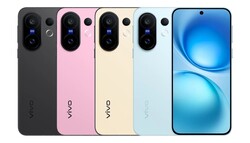
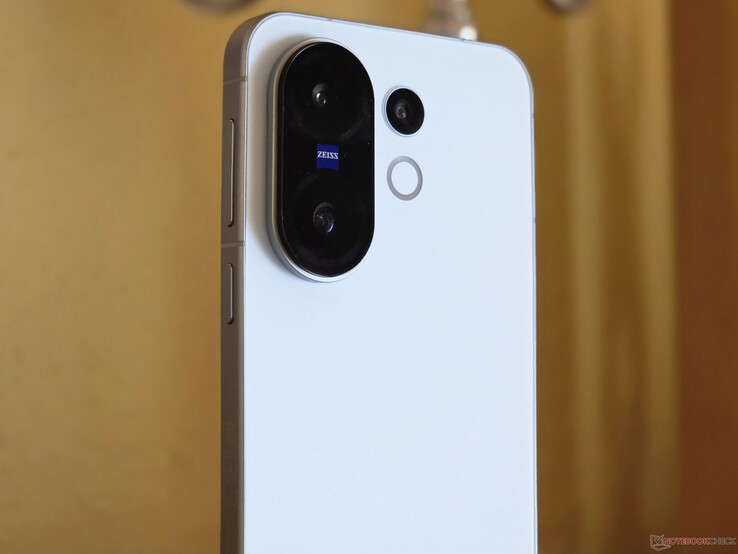


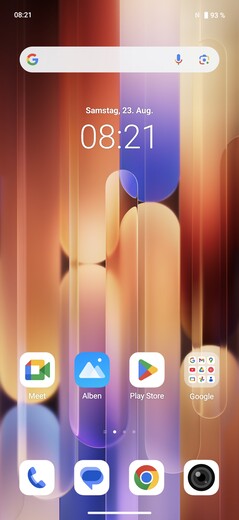

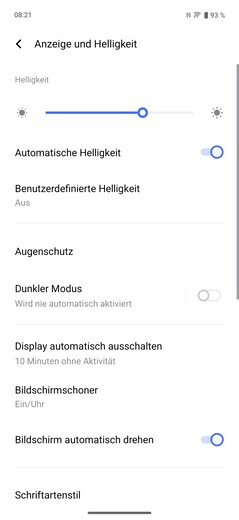

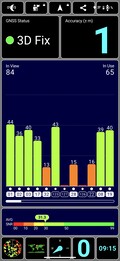

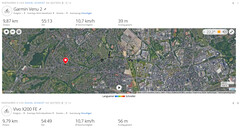










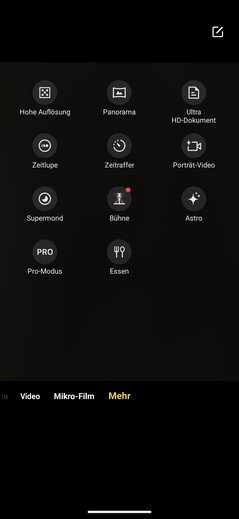
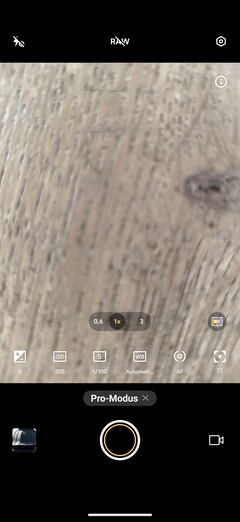
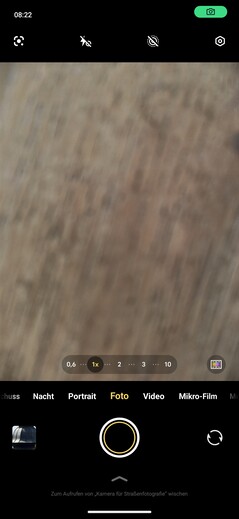

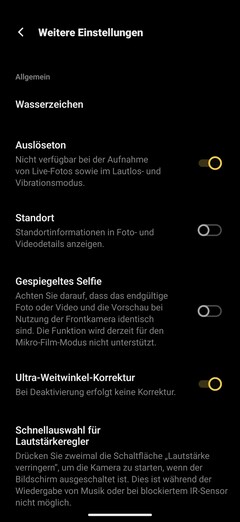


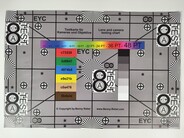

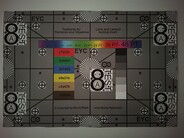

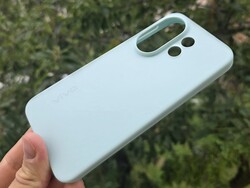












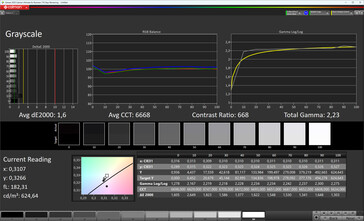
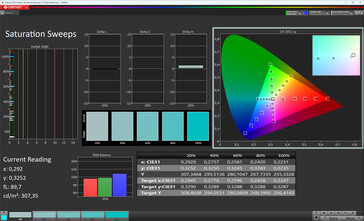
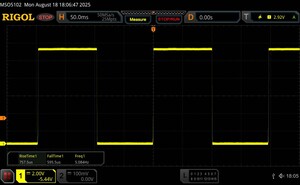
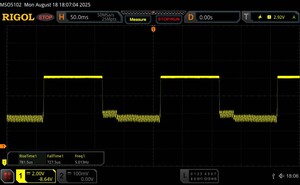

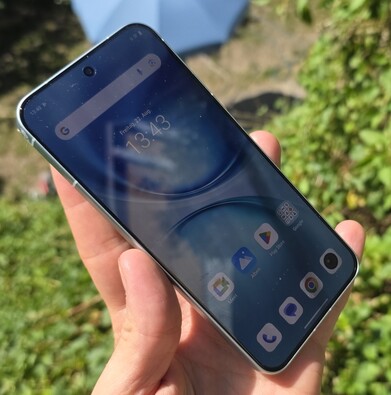
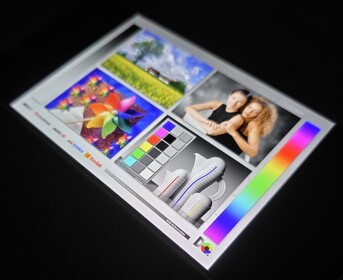
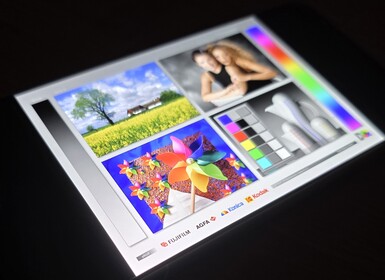
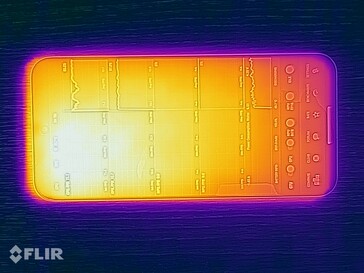
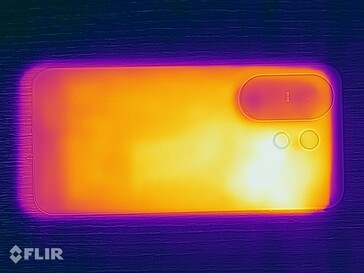
 Total Sustainability Score:
Total Sustainability Score: 










